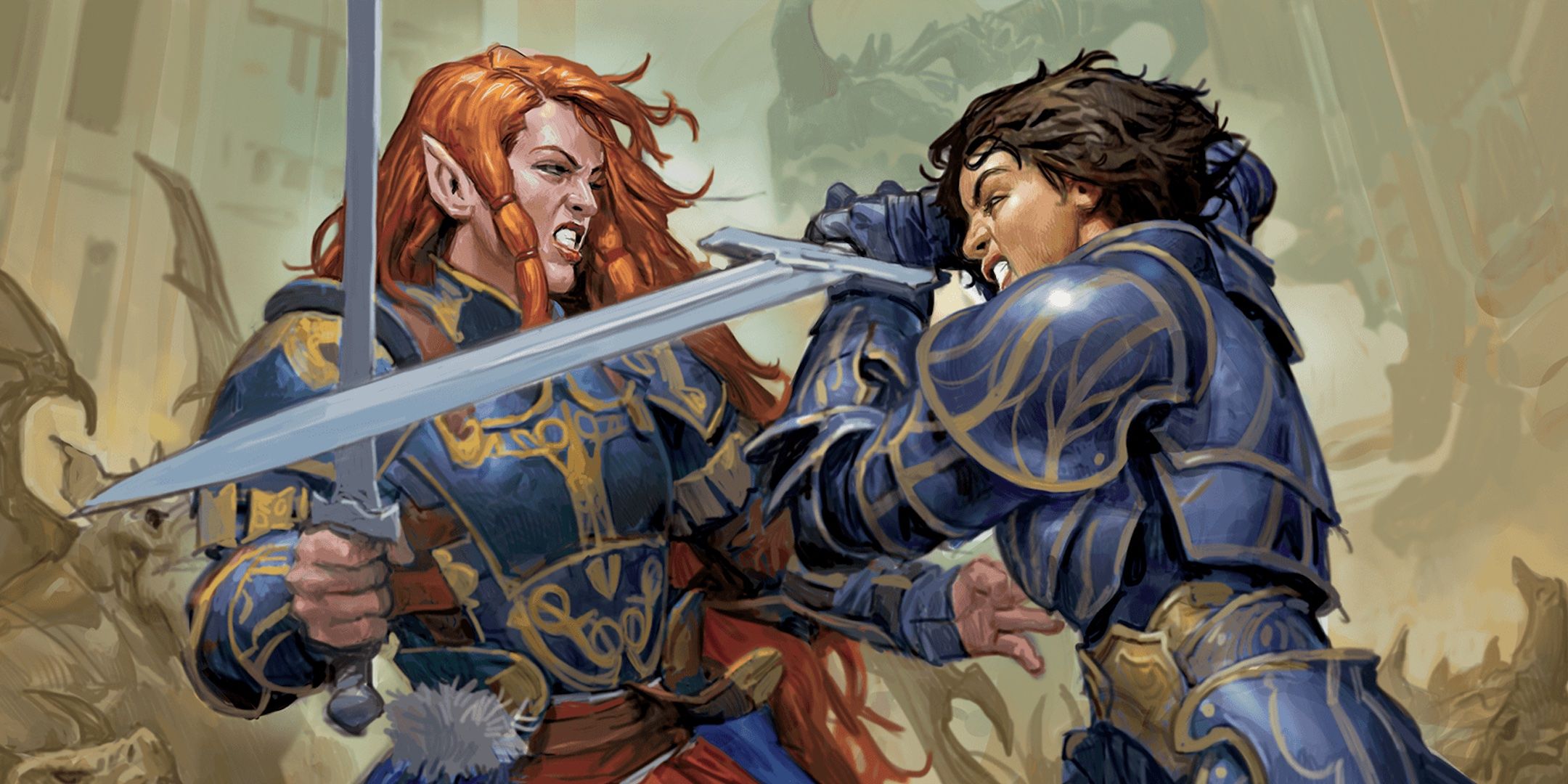
In Dungeons & Dragons, one major goal a lot of Dungeon Masters, or DMs, want to achieve is making their players feel like heroes. That's at the core of most campaigns. The player characters overcome great odds to become the heroes of their individual or group story.
RelatedDungeons & Dragons: How To Implement Loyalty
How nice you are to NPCs could radically change the game thanks to loyalty.
PostsHero points help track and reward this progress for your players. It's an opportunity that most of us wish we could use in our real lives, looking at a situation and not just wanting it to go in our favor, but being able to tap into our inner hero to improve our chances of success. This guide will talk about what hero points are and how they can help at your table.
What Are Hero Points?
Angel of Glory's Rise by Andrew MarHero points are an optional rule in the Dungeon Master's Guide that allows players to bolster their rolls. Each player gets so many hero points per level, the breakdown of this will be explained further in this article. Unlike other class features and resources that can be regained after a long or short rest, the players only have a set amount until the next time they level up.
This optional rule is found on page 264 of the Dungeon Master's Guide (2014).
Hero points are described as being a way for players to feel more like superheroes rather than just ordinary adventurers. After all, with a grand fantasy story centered around them, they are meant to feel like powerful forces, driving their own destiny forward.
So, giving them the chance to bend the fates toward their goal, while also keeping it in check with only a set amount of times they can do this, can alter how players feel about their characters and their own abilities, while creating some dramatic and even cinematic moments in the campaign.
How Do You Use Hero Points?
DND 2024 Player's Handbook Cover via Wizards of the CoastUsing the book's example of starting your players at level one, they will also start with five hero points. They only have these five for the whole of them being level one. But, when they level up, players will regain the initial five hero points plus an amount equal to half their character's level. So, at level two, players will have six hero points they can spend for the entirety of that level.
These hero points are represented by a d6. Players can decide to use them while rolling for any:
- Attack roll
- Ability check
- Saving throw
- Death saving throw
For Attacks, Abilities, and Saving throws, players will roll their usual d20, but before the DM describes what happens, they can choose to spend a hero point to add 1d6 to the roll. Per the sourcebook, they can only spend one hero point at a time.
As for Death saving throws, hero points act a little differently. Instead of adding whatever they rolled on their d6, players instead can spend the hero point to turn a failure into a success. This gives them some agency in a situation that would otherwise be purely up to the dice, especially if a player does not want to lose their character.
RelatedDungeons & Dragons: How To Implement Madness
This guide details the madness mechanic in D&D 5E and how you, as a DM, can implement it into your campaign.
PostsWays To Alter Hero Points In Your Campaign
Wizards of the Coast, PHB 2024Now, just because the rules say this is how hero points work doesn't mean you can't adjust them to work for you and your table. You can alter the rules endlessly, but here are a few different ideas on how you can bring hero points into your campaign that shy away from the original, optional, rule.
Regaining Hero Points
You can let your players regain their hero points before a level-up. Whether you are leveling up through experience or milestones, it can take a long time to hit that next level. So, as a level can stretch across many sessions, you may find that your players aren't using this resource at all, afraid to run out before it comes down to Death saving throws.
If you find that's the case, you can create a way for players to regain some of their spent points. It can come down to a dice roll, almost like how certain creatures must roll a specific number to regain one of their forms of attack.
You can give them back one hero point at the start of each session if you want to see them using this resource often. Or, you can tie it into your story. That there is a location they can visit and feel reinvigorated, giving them back a number of hero points for their stay.
Re-Roll Or Advantage
via DNDBeyondInstead of rolling a d6 and adding that number to a dice, you can embrace the all-or-nothing mentality of having them re-roll the ability, attack, or saving throw.
Then it's up to you to decide if they must keep the new number, even if it's worse. Or, instead, they can choose to make the roll at advantage, letting them pick the higher or lower number as it suits the situation.
Subtracting From A Roll
Are your players in the middle of a fight that could finish them off? Maybe their hero points can bail them out in another interesting way.
You could decide to let the hero points affect their current encounter. If an enemy attack would hit, your players could spend a hero point to make the opposing NPC roll a d6 and subtract that number from the attack roll.
While you would have to weigh how this would impact your fun as a DM running the encounter, it's an option that could have your party erupting with cheers as a pivotal moment in the session swings in their direction by being wise enough to hold onto some hero points.
If them being able to use all five or more of their hero points in a combat session sounds nightmarish, there's no reason you can't limit it to one roll per encounter, making it so that they can still use a hero point to harm a foe's rolls, but keeping it from getting too out of hand.
NextDungeons & Dragons: How To Implement Renown
There are no chicken chasers here, only well-respected, highly renowned heroes. This is a guide to renown in D&D and how to bring it into your game.
Posts












